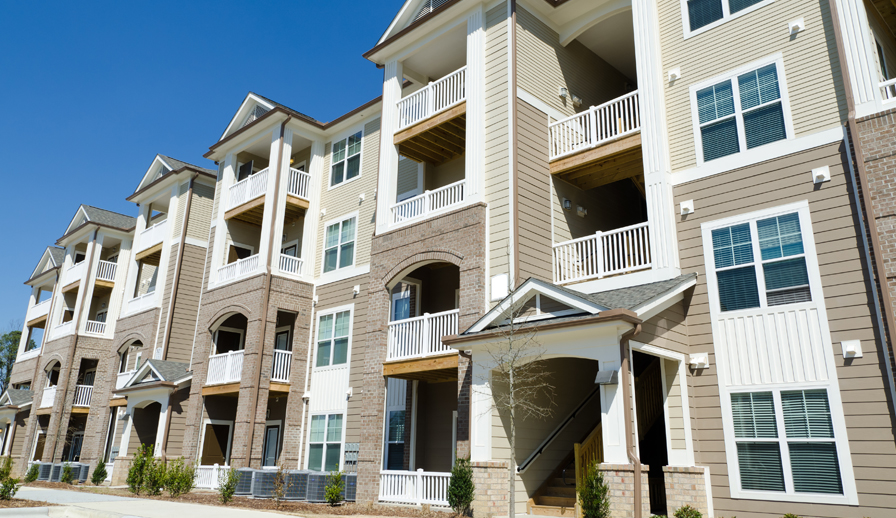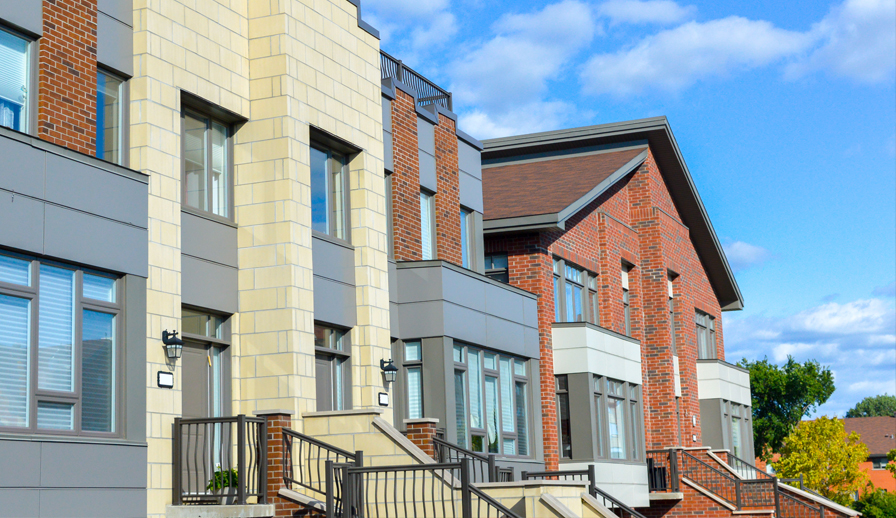Struggling to find content to share on your social media pages?
Stop scrolling through Instagram and Facebook. All you need is REALTOR.ca.
Our consumer lifestyle blog, Living Room, offers content including home improvement, market trends, DIY projects, neighbourhood guides and profiles on unique homes. Living Room publishes exciting new content four times a week (with unique French content for our Francophone fans).
While CREA Café is curated specifically to help your business grow and thrive, Living Room content is perfect to share with your clients.
Owned and operated by the Canadian Real Estate Association (CREA), REALTOR.ca is the No. 1 real estate platform in Canada (Comscore, 2020) with MLS® System listings from across the country.
Share this blog with your clients and follow REALTOR.ca on Twitter, Instagram and Pinterest.
You can read the original blog here.
Whether you reside on a tightly packed city street, or a sprawling suburb with neighbours all around, living in close quarters with other people often means dealing with each other’s day-to-day sights and sounds.
Managing situations that arise between closely confined neighbours can be a delicate undertaking. There are many stories about neighbours who couldn’t get along because of disputes over late-night noise or unkept yards. Luckily, there are a number of helpful resources out there on how to manage and communicate with neighbours regarding the most common situations you’ll likely run into.
Desmond Brown, a Toronto-based REALTOR® and sales representative with RE/MAX Hallmark Realty LTD. and host of the Sold in the 6ix podcast, walks us through common situations you might encounter with close neighbours, and how to handle them without the presence of a condo board..
Sharing mutual driveways and fences
In densely populated communities, it’s not uncommon for neighbouring properties to have shared areas like driveways, adjoining walls, and fences. Communicating with neighbours about these spaces can be vital to avoiding conflict and keeping overlapping territory in good shape.

When it comes to mutual driveways, Brown says cooperation between neighbours is needed for the use and maintenance of the area. In some cases, neighbours may work out an arrangement for shoveling snow and parking in the space, like taking turns on a weekly or monthly basis.
In some cases, “they’ll have keys to each other’s cars, and they’ll exchange keys and just move the cars for each other if they’re coming in,” said Brown. “That’s very common in great, cooperative downtown neighbourhoods. However, every now and then, we get neighbours who take advantage of the situation, who believe the mutual driveway is owned by them, which leads to a lot of disputes.”
Neighbours may also share fences between yards along the property lines. Each municipality will outline appropriate heights and materials for fence-building on your property, and in some cases, may require you apply for a building permit when erecting a fence, such as in Calgary, where permission is required if your fence exceeds a specific height.
If an issue does arise between neighbours regarding fences, the municipality may not be required to step in. In Toronto, for example, the city doesn’t have a role in resolving fence disputes or costs—neighbours are instead advised to speak with one another or seek their own legal advice.
To mitigate any confusion between neighbours around property lines and fences, obtaining an updated land survey can help establish land boundaries and existing structures.
“That will tell you everything,” said Brown. “Every boundary, every structure. It’ll outline if it’s on your property or not, whether anything is encroaching onto your property or infringing on your property—an up-to-date survey will protect your property rights.”
Cutting trees and branches
Tree-lined streets are a beautiful sight, but problematic branches and roots can quickly become a hazard to nearby properties. If a tree needs to come down or be pruned, your next course of action may warrant the involvement of your neighbour.
Depending on your city, you may be required to obtain a permit to remove a tree if it meets certain criteria, such as in Montreal, where an authorization certificate is required to fell a tree on a private lot.
If a tree’s branches are overhanging onto a neighbouring property and pose a threat, the homeowners may have to come to a mutual agreement on how to proceed with managing the tree. In Toronto, for example, the city does not oversee the trimming of trees on private property—pruning trees is a civil issue and falls under private property rights. In instances where an agreement can’t be reached between neighbours, such disputes can be settled through a lawyer.
Brown recently encountered a situation in which one of his clients had a large tree growing on their property with branches crossing into their neighbour’s space.

“A couple of huge branches [were] hanging [over] a neighbour’s garage and the neighbour was afraid this tree was going to cause damage,” said Brown. “So they approached my client and I helped manage the property, and I brought an arborist in and we corrected the problem.”
Dealing with construction and renovations
With many of us spending more time at home due to the pandemic, it’s been an especially popular time for homeowners to undertake home renovations. Most construction projects create dust, traffic, and piles of scrap, which can be disruptive to not only your own household, but the neighbours too.
When conducting renovations on his own property, Brown has given his neighbours a courtesy heads up beforehand about construction work. This conversation can outline expectations around potential noise disruptions, building timelines, and the coming and going of tradespeople.
According to the City of Toronto’s Good Neighbour Guide for Residential Infill Construction, it’s also important to talk to your neighbours about demolition and construction work early in the process, before applying for permits—informed neighbours are likely to be more supportive and understanding about the construction. At the beginning of construction work, the guide explains the property owners and the builder should provide neighbours with a means to contact them if any issues come up, as well as a plan for resolving any problems that may arise.
If for any reason debris from a demolition or dirt ends up on the neighbour’s property, Brown says it’s important for contractors to clean up any mess.
“When you’re finished [with] your reno, offer to clean your neighbour’s windows,” said Brown. “You’re going to be living next to one another for probably a long time, so just treat them the way you want to be treated,” he added.
Managing noise levels
Noise is an inevitable part of urban living, whether you’re listening to the hum of traffic, nearby construction, or the chatter of neighbours. There’s a point, however, where noise can become unreasonable.
Each municipality has its own criteria for sound bylaws, which lay out appropriate decibel levels and time restrictions for noise. These bylaws can also apply to a variety of sound sources such as from businesses, construction activity, animals, and vehicles. For instance, in Vancouver, leaf blowers can’t be used in the West End, and can only be operated between 8:00 a.m. and 6:00 p.m. on weekdays if used less than 50 metres from a residence.
Giving your neighbour advanced notice about potential noise disruptions can be beneficial for both homeowners. For instance, according to Regina’s Good Neighbour Guide, if you’re planning to have a party on your property, your neighbour might be more understanding about the noise if you talk to them about your plans beforehand.
If you’re in a situation where you sleep during the daytime for nighttime work shifts, Brown says you should discuss your schedule with neighbours ahead of time to limit any disruptive noise.
“If you go to sleep and work shifts and so on, then you should let your neighbour know it might be nice if they don’t play music at certain times when you’re sleeping,” said Brown. “I’ve also had people who have renovated and put sound insulation in the walls. That helps a little bit, but it really does come down to common courtesy and being good neighbours.”
If you’re looking to move into an area where homeowners live close together, consult the expertise of a local REALTOR® for insights on local regulations and neighbourhoods.




